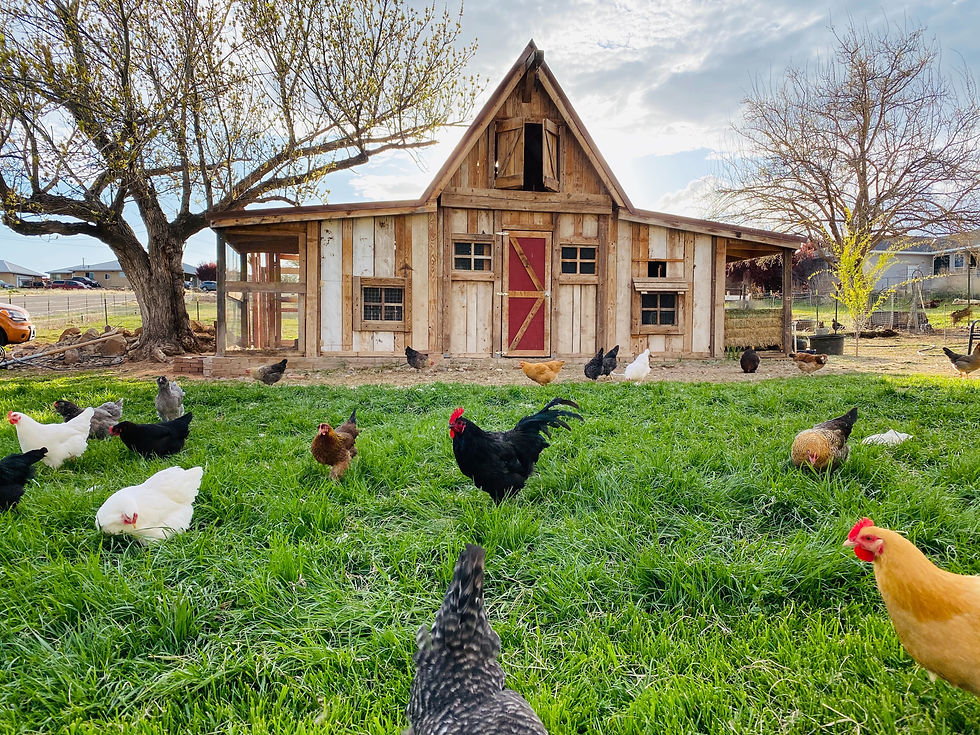
When shopping for chicken, most consumers are confronted with an array of choices, labels, and prices that can be confusing at best. Among these choices, the distinction between regeneratively raised pasture-raised chickens and commercially mass-produced chickens is particularly significant. This difference not only impacts the nutritional value of the chicken but also the environmental footprint of its production. In this blog post, we will explore these aspects to help consumers make more informed decisions.
Nutritional Differences
1. Fat Quality and Content: Regenerative pasture-raised chickens often have a different nutritional profile compared to their mass-produced counterparts. These chickens typically have access to a diverse diet from foraging on pastures, which includes insects, grasses, and seeds. This diet naturally enhances their omega-3 fatty acids content, which is beneficial for human cardiovascular health. The meat from pasture-raised chickens also
tends to have a higher proportion of healthy fats and lower levels of saturated fats.
2. Vitamin Content: Pasture-raised chickens benefit from greater exposure to sunlight, which contributes to higher levels of vitamin D in their meat. This contrasts with mass produced chickens, which are often raised in confined conditions with little to no exposure to sunlight. Additionally, the varied diet of pasture-raised chickens can lead to higher levels of certain vitamins such as vitamin E and vitamin A.
3. Overall Meat Quality: The meat quality of pasture-raised chickens is also often superior. Due to their more active lifestyle and natural growth rate, their meat tends to be firmer and is reported by many consumers to have a richer flavor. In contrast, mass produced chickens are generally bred for rapid growth and higher breast meat yield, sometimes leading to a texture that is perceived as less desirable.

Environmental Impact
1. Carbon Footprint: Regenerative agriculture practices used in raising pasture chickens aim to restore and enhance the natural environment rather than deplete it. These practices include rotational grazing, which helps improve soil health and increase carbon sequestration. Conversely, the mass production of chickens typically results in significant carbon emissions due to intensive energy use required in large-scale operations and the methane production associated with waste management.
2. Biodiversity: Pasture-raised chickens contribute to a farm's biodiversity. Their presence on the land and their foraging help control pests naturally, reduce the need for chemical herbicides and pesticides, and promote a healthier ecosystem. On the other hand, mass-produced chicken farms often use feed made from crops like soy and corn, which are usually grown in monocultures that significantly reduce biodiversity.
3. Soil and Water Health: Regenerative practices enhance soil structure and fertility, leading to better water retention and reduced erosion. This contrasts sharply with the environmental degradation often associated with mass poultry production, where waste runoff can lead to water pollution and the overuse of antibiotics can contribute to antibiotic resistance.

Consumer Considerations
While regeneratively raised pasture-raised chickens are often more expensive than mass-produced options, the price reflects not only the superior nutritional qualities of the meat but also the sustainable farming practices that protect the environment and animal welfare. Consumers looking to make healthier choices for themselves and the planet might find this premium well worth it.
As more people become aware of these benefits, the hope is that consumer demand will shift, encouraging more farms to adopt regenerative practices. Every purchase decision is a chance to vote for a more sustainable and healthful food system.
Choosing between regeneratively raised pasture-raised chickens and commercially mass-produced chickens is more than just a matter of taste or health; it's a decision that impacts ecosystems and future food sustainability. As we become more conscious of these implications, our choices can lead to significant positive changes, both locally and globally.
.png)
Comentários